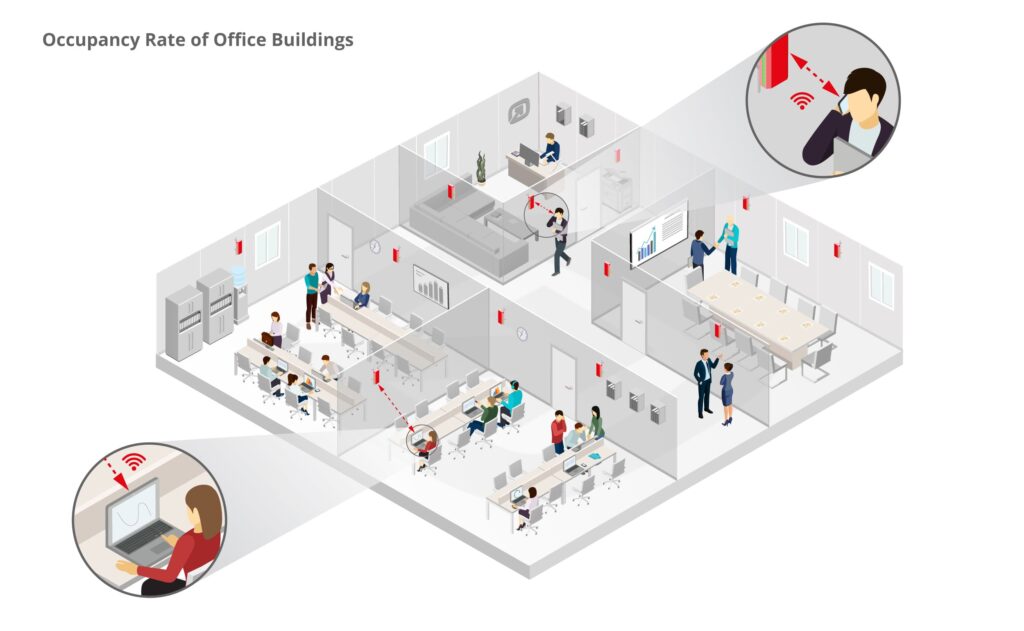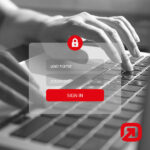Employees need access to suitable workspaces, whether they work in the office daily or only come in occasionally. Keeping track of who is in the office and ensuring that all employees have access to an adequate workspace can be a challenging task for companies – especially now that modern, flexible workplace models are becoming increasingly important. One of the best ways to address this is by deploying an occupancy monitoring system. Our blog post outlines what systems like this can look like and how they can yield huge savings and lead to better space management in commercial and office buildings.
TYPES OF OCCUPANCY SENSORS
There are different methods to capture occupancy. Some systems require equipment such as mobile phones or identification tags (e.g. beacon cards, RFID tags) that have to be carried by the employees. This is contrasted by systems that utilize sensors such as passive infrared (PIR) that enable generating occupancy information without the need for users to carry a device. Tracking utilization using occupancy sensors installed at each space (desk) can be a great choice for many organizations since it provides precise results at an anonymous level. This method is particularly unobtrusive and doesn’t interrupt the office workflow at all, especially if the sensors are attached to the underside of a desk or chair. In this use case, we explain a promising low-cost, low-maintenance method, demonstrating how BLE beacons with built-in motion sensor capability can be used in a passive system to measure office space occupancy.
EXAMPLES OF DIFFERENT METHODS FOR MEASURING WORKPLACE OCCUPATION
Generally speaking, selecting a technology should always consider the accuracy requirements (e.g. room-level, desk-level, people count) as well as existing limitations or downsides for certain sensors (for example, PIR sensors won’t detect motionless objects, imaging systems are more sophisticated but also more expensive, etc.). It can also make sense to combine different types of sensors in order to achieve an accurate and cost-efficient solution tailored to individual needs.
BENEFITS OF TRACKING OCCUPANCY
Using occupancy tracking allows organizations to find opportunities to improve the workplace and make data-driven decisions. A comprehensive space management strategy enables assessing the current needs of the workplace, forecasting future needs and exposing effects on profitability.
When an organization has insight into occupancy data, it can see which spaces are in high demand and which are rarely used. Knowing the location of underutilized space allows determining if the area should be utilized differently or if a new workspace design would make it more attractive to employees. At the same time, occupancy tracking prevents decreasing available workspace too much and potentially compromising employee productivity and comfort.
Granting employees access to space occupancy data is providing them with the ability to find the resources they need, when they need them. By combining data from multiple sources – e.g. calendar bookings, occupancy sensors – companies are provided with an even richer and more realistic view of how their facility is being used. This approach decreases the risk of meeting spaces sitting empty if meetings are canceled or rescheduled since real-time occupancy data can reveal unoccupied spaces that are marked as “reserved” in the system.

Furthermore, having accurate visibility into space utilization can be used for occupancy-oriented cleaning of the office facilities. Measuring occupancy can also play a role in controlling demand-driven applications like smart lighting and smart heating. It prevents companies from wasting money lighting, heating, cooling and performing maintenance and cleaning on spaces no one is using.
CHALLENGES
What has to be taken into account when planning the implementation of an occupancy monitoring system are specific limitations and requirements that have to be followed for the installation of different sensors. Moreover, the costs can differ greatly depending on the system that is used. The wrong choice of occupancy sensors can leave you with inaccurate utilization data, and/or high costs.
We’d be happy to talk with you about your specific workplace goals, and how we can help you select a suitable sensor technology – please do not hesitate to contact us.









